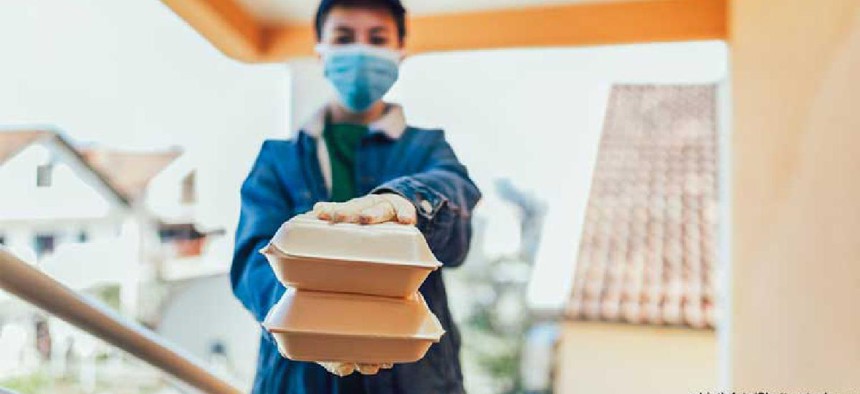NYC’s food assistance portal signals next wave of services delivery

A no-code, cloud-based platform let city workers build a management hub where residents can request food assistance and simultaneously invoke the workflows that coordinate food distribution.
As COVID-19 infections spread and New York City essentially shut down, NYC officials needed a way to ensure that people with food insecurities would not go hungry. To do that, they set up a cloud-hosted management hub to handle the public’s applications for food, donation options and delivery assistance by verified city taxi and limousine drivers.
Using no-code software from Unqork, the city’s Department of Information Technology and Telecommunications stood up the hub in three days. GetFoodNYC went live on March 24 with a trial 15 deliveries. On a single day in early May, more than 750,000 deliveries went out.
The company provides a full cloud-hosted software stack and takes security precautions such as using a single-tenant cloud to prevent the comingling of city data.
Government users drag and drop customizable blocks into their website layouts. GetFoodNYC starts with a simple survey about food insecurity and the responses trigger the next steps.
“Where Unqork really becomes powerful is right beneath that surface of what the public sees,” said Cas Holloway, the company's head of public enterprise. While agency staff are dragging and dropping components to build the initial simple survey, he said, they are also building the backend database and the workflow that facilitates distribution.
The system is essentially saying, “if this person ends up being eligible and they place an order, then I need this order to be routed through a workflow to a hub," Holloway said. "I need a certain number of these orders to be aggregated together. I need to put them through a geo-optimizing API – we use Google right now for that – and then I need to batch thousands of orders into routes that then get distributed electronically to drivers, and those drivers need to be validated in the system that they are eligible [Taxi and Limousine Commission] drivers.”
Officials also use the system to pay the 20,000 participating drivers.
On the reporting side, the city has dashboards and maps showing what food has been distributed and to whom. It can use that data when it files for reimbursement from the Federal Emergency Management Agency. “The reason that FEMA would pay for this is we’re in a public health emergency, and people in this lockdown state can’t get what they need … to eat,” said Holloway, who was the deputy assistant mayor for operations and when the city helped coordinate response to Hurricane Sandy in 2012.
To get that FEMA reimbursement, the city must prove it’s targeting people in need. With a database that lets officials track orders from the moment an applicant becomes eligible, they can do just that.
“You can’t give food to just anybody,” Holloway said. “You can’t send a sandwich to Warren Buffet.”
The management hub launched earlier in March with the NYC COVID-19 Engagement Portal for tracking infections. Residents provide status updates on COVID symptoms, positive test results and quarantine status. Based on the responses, the city sends automated communications for 14 days and links update statuses. For instance, someone could report symptoms, a positive test and when they leave quarantine.
The management hub also powers the NYC Personal Protective Equipment Donation Portal, through which gloves, face shields, hand sanitizer and more can be donated for the city to distribute.
In early April, Washington, D.C., officials set up its DC COVID-19 Support Hub to help residents who have tested positive or are self-quarantining to apply for delivery of food, hygiene essentials and infant products. They can also connect with resources for prescription drug access and mental health providers.
Unqork is working with more cities to set up hubs, and Holloway said he expects these types of services to remain in place once the pandemic ends.
Delivery of government services that used to require significant coordination will still exist after the outbreak is under control, Holloway said. “But it’s no longer going to be acceptable if you’re a mayor, a governor, an agency providing a service, even at the federal level, for that to be the only way to get that service,” he said.
“People’s expectations and what is considered the reasonable and necessary way to provide services is going to change, and you’re going to need to have a virtual option,” he said. “It’s going to be more efficient and cost-effective to do it that way.”





